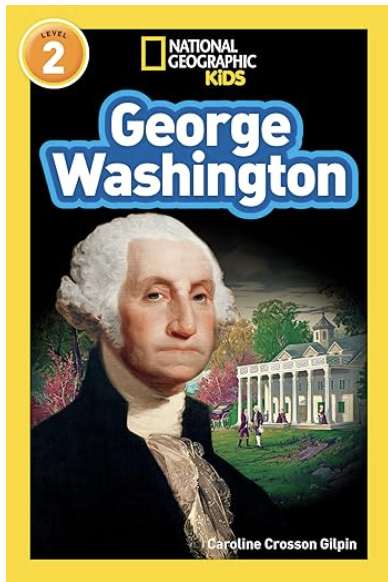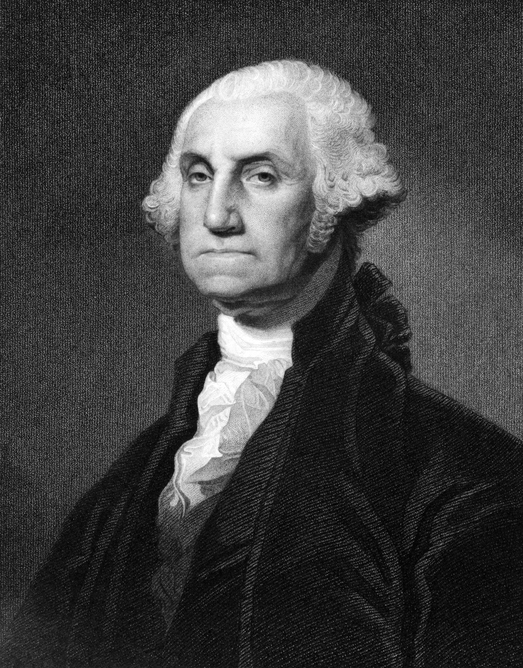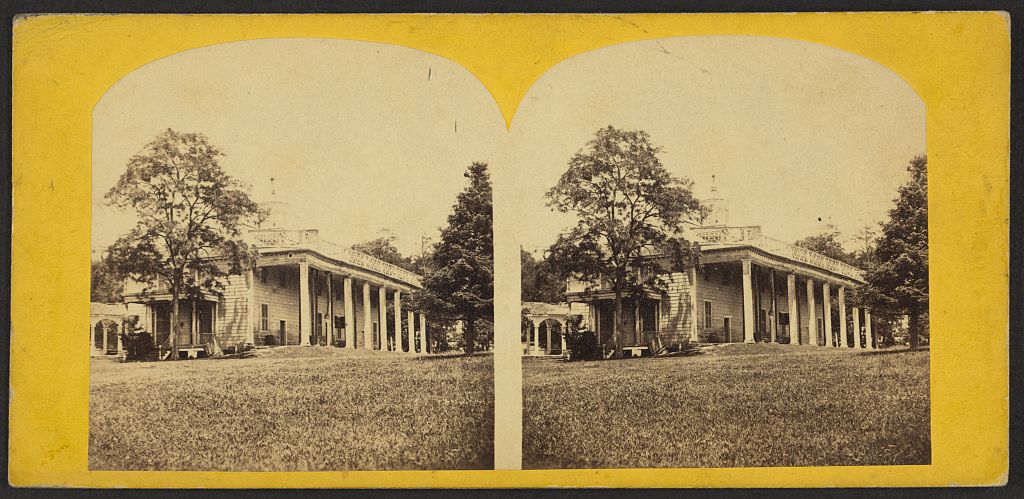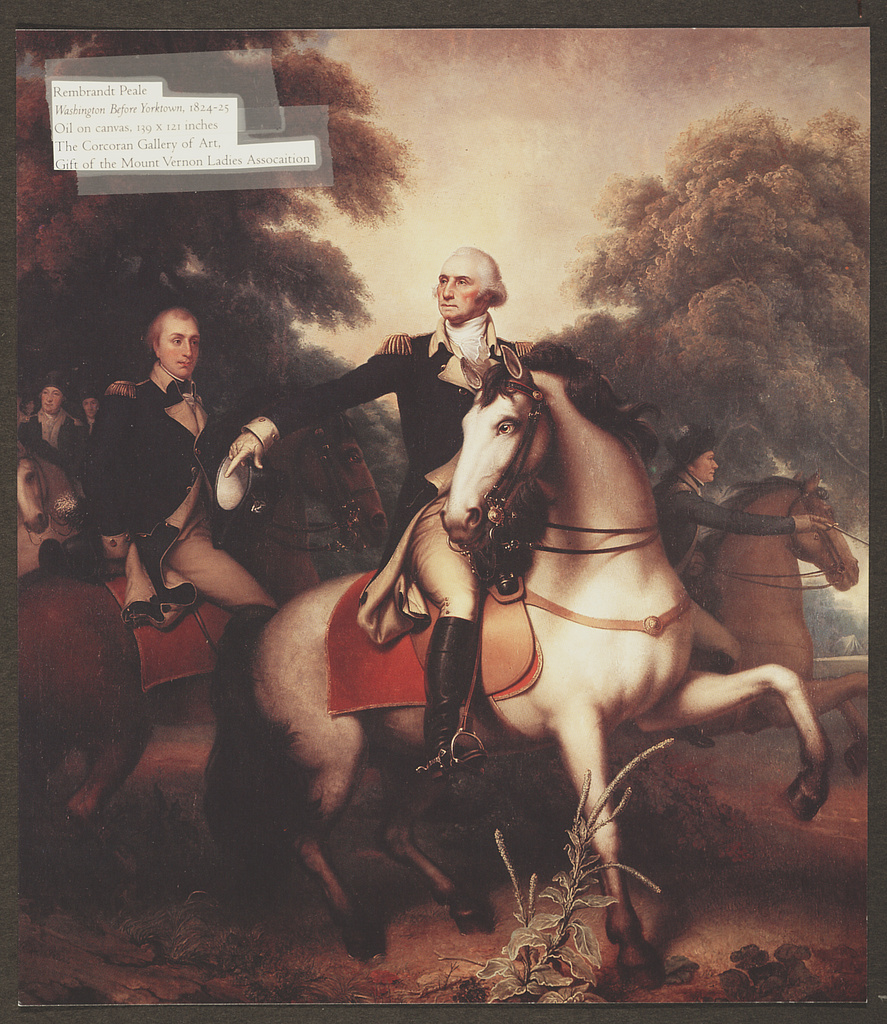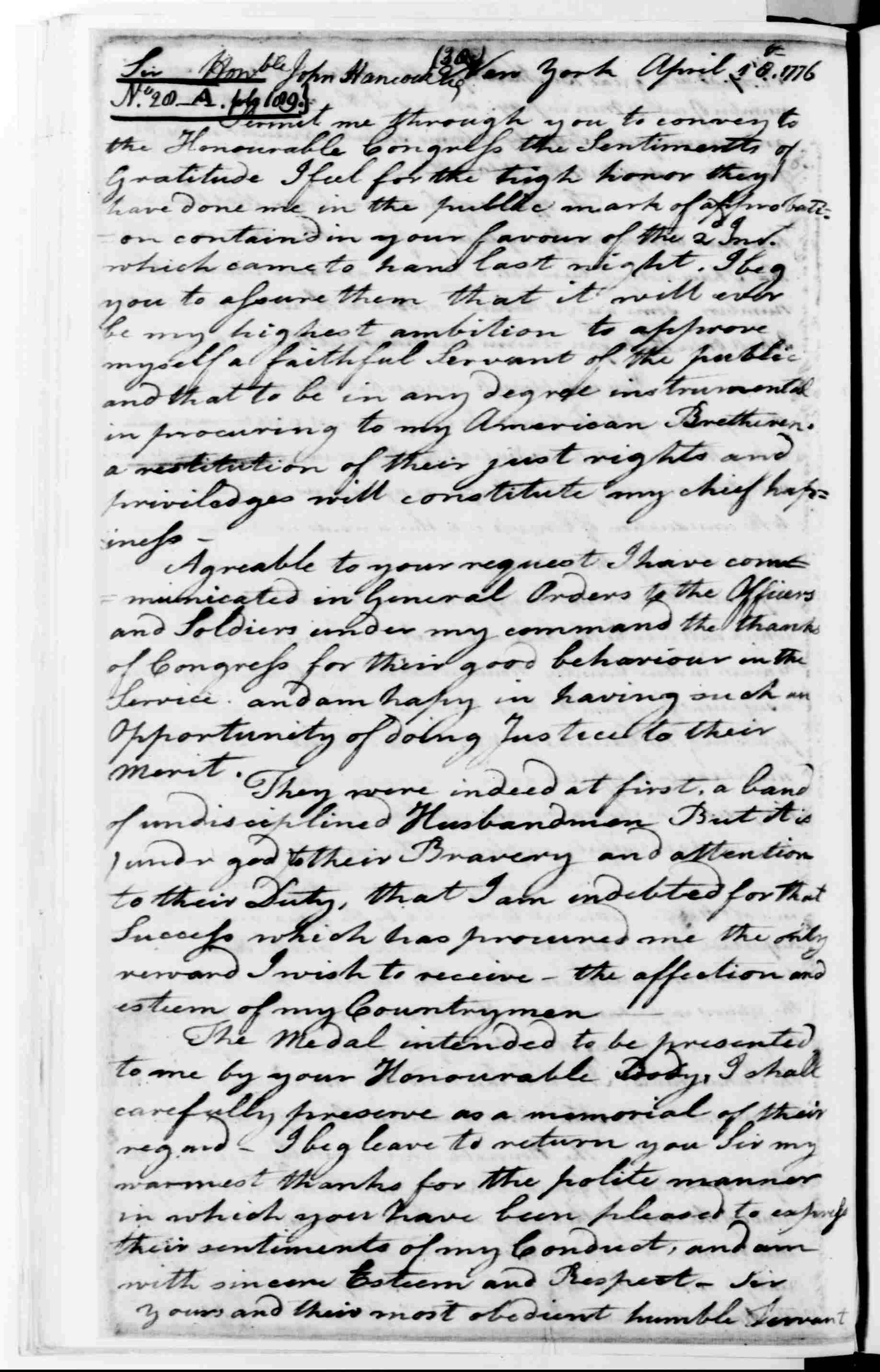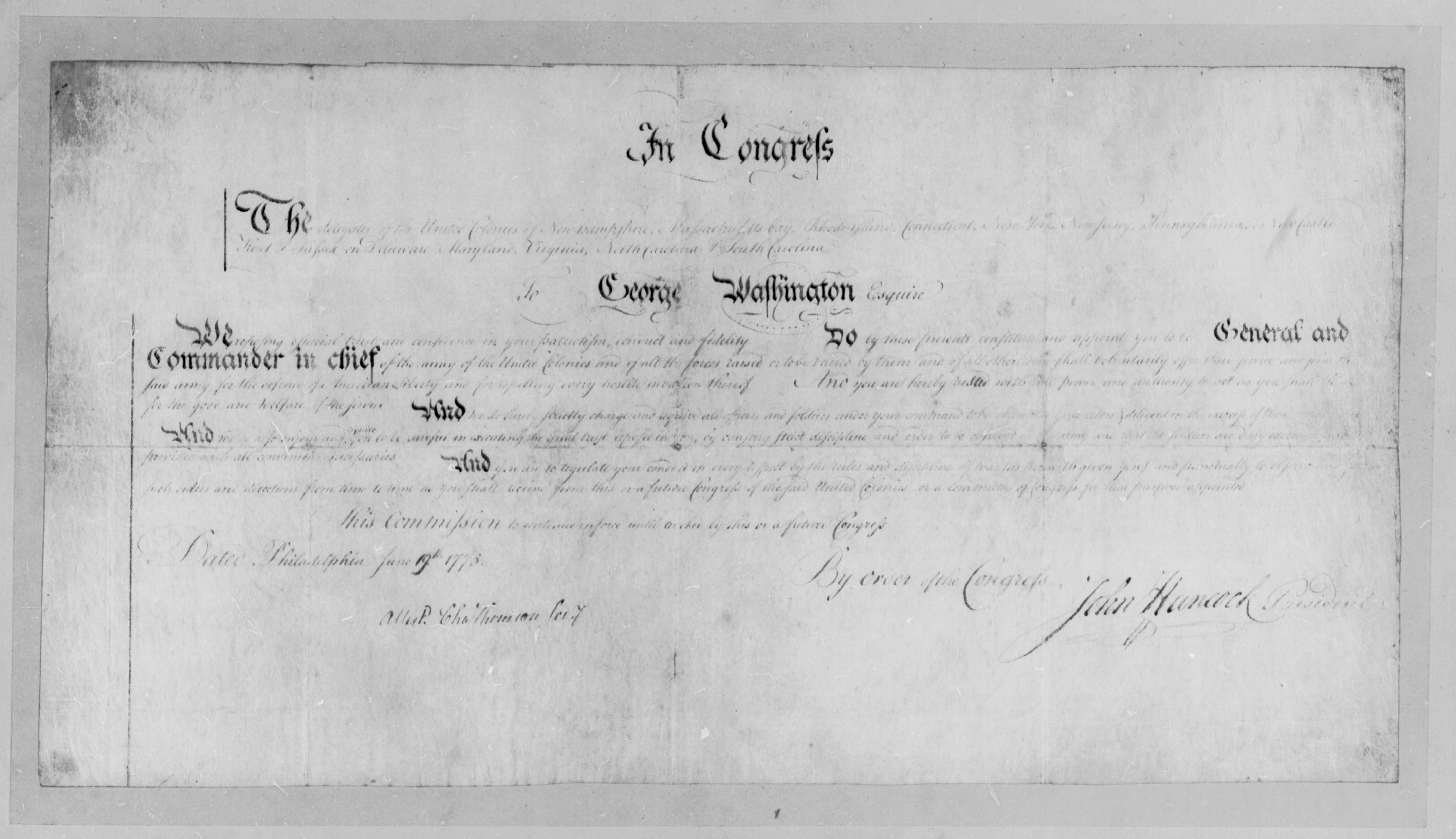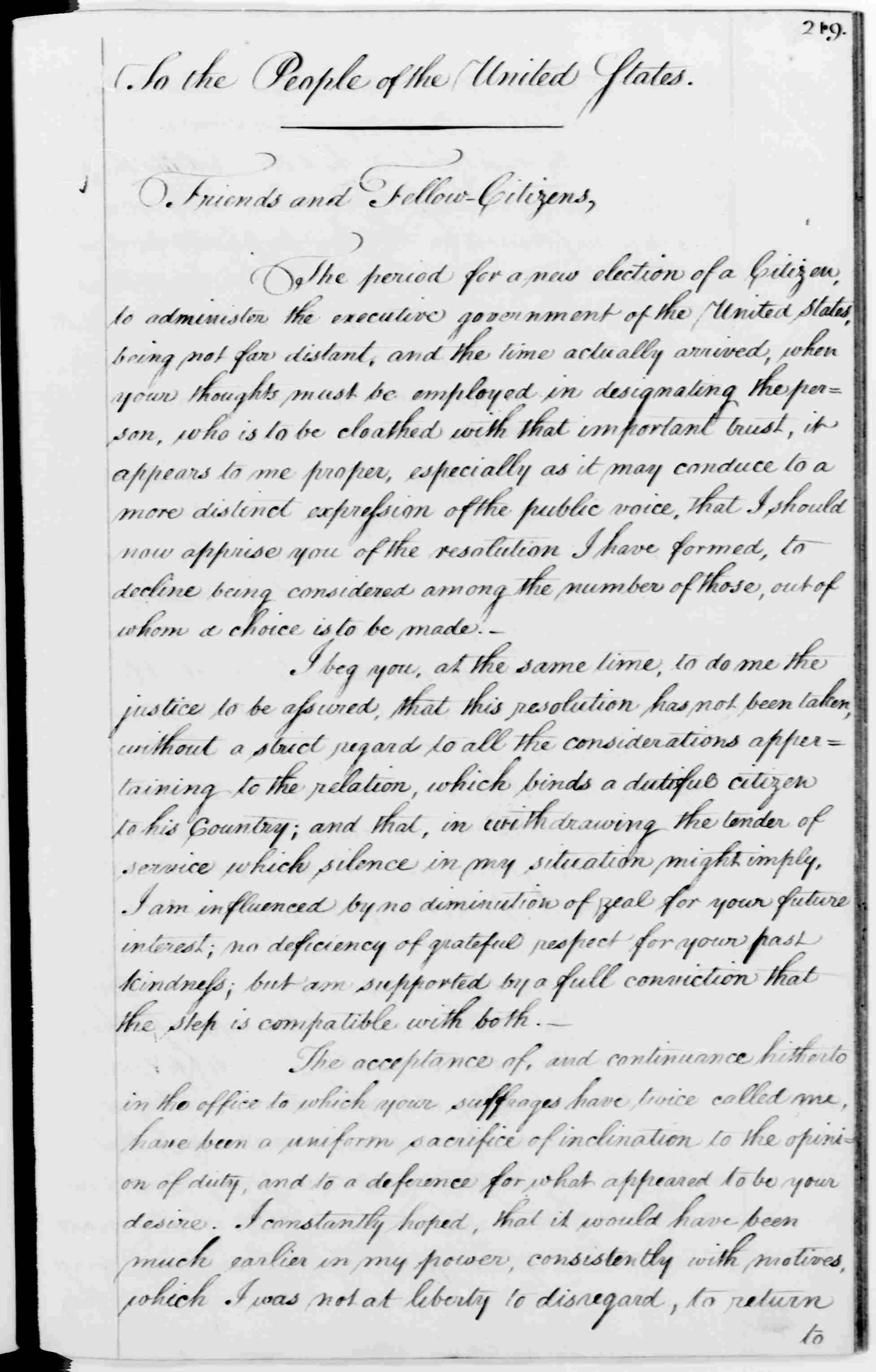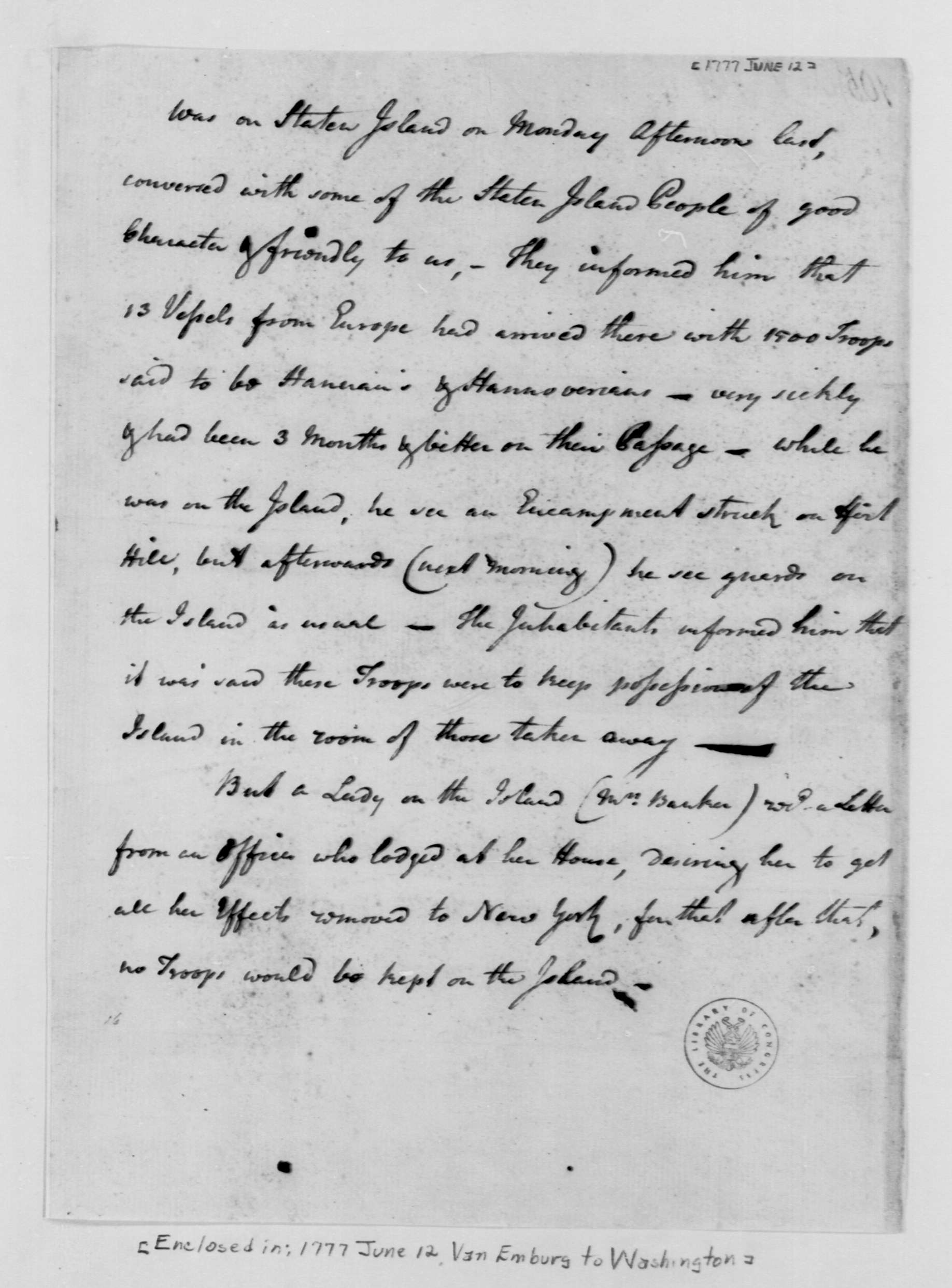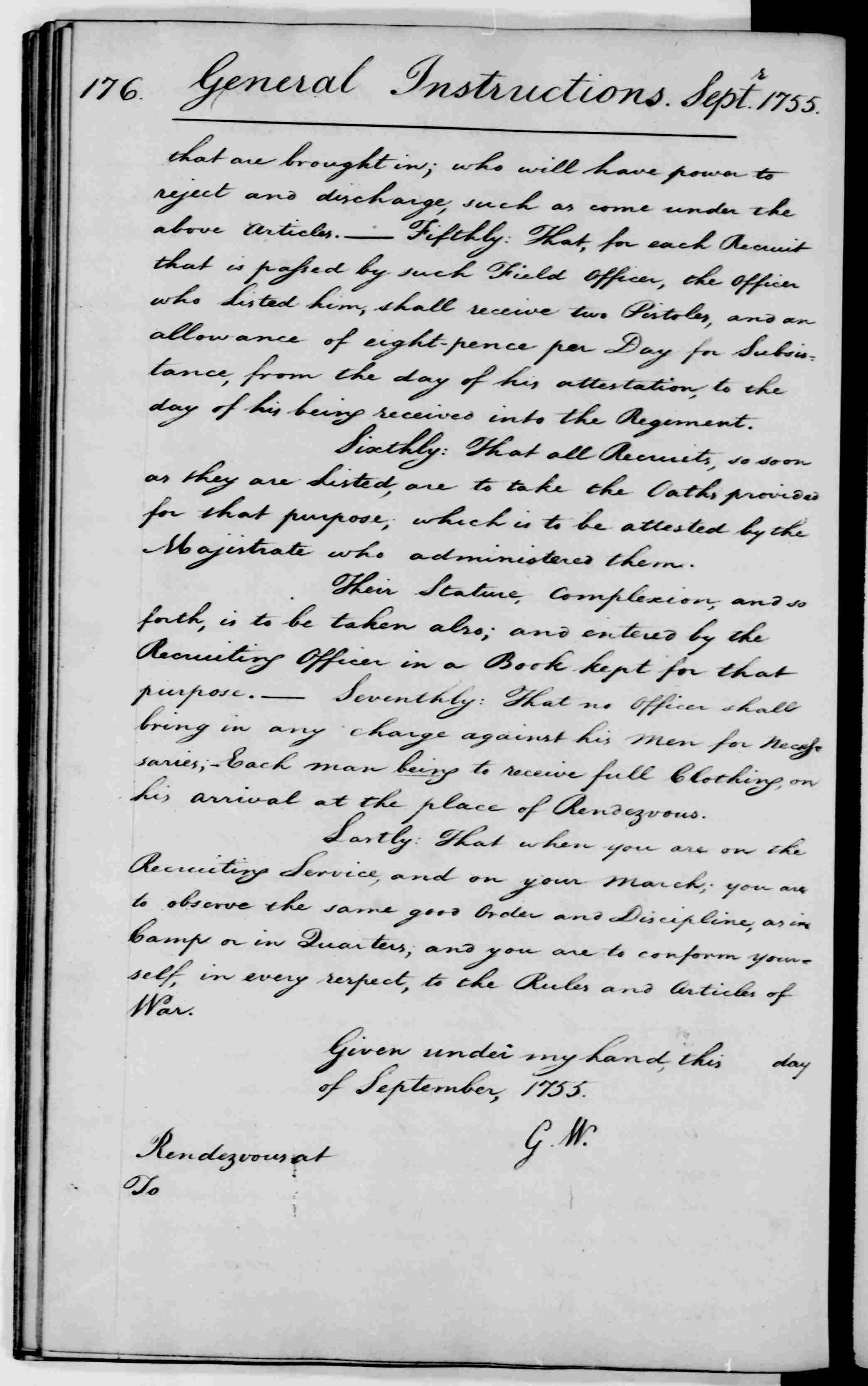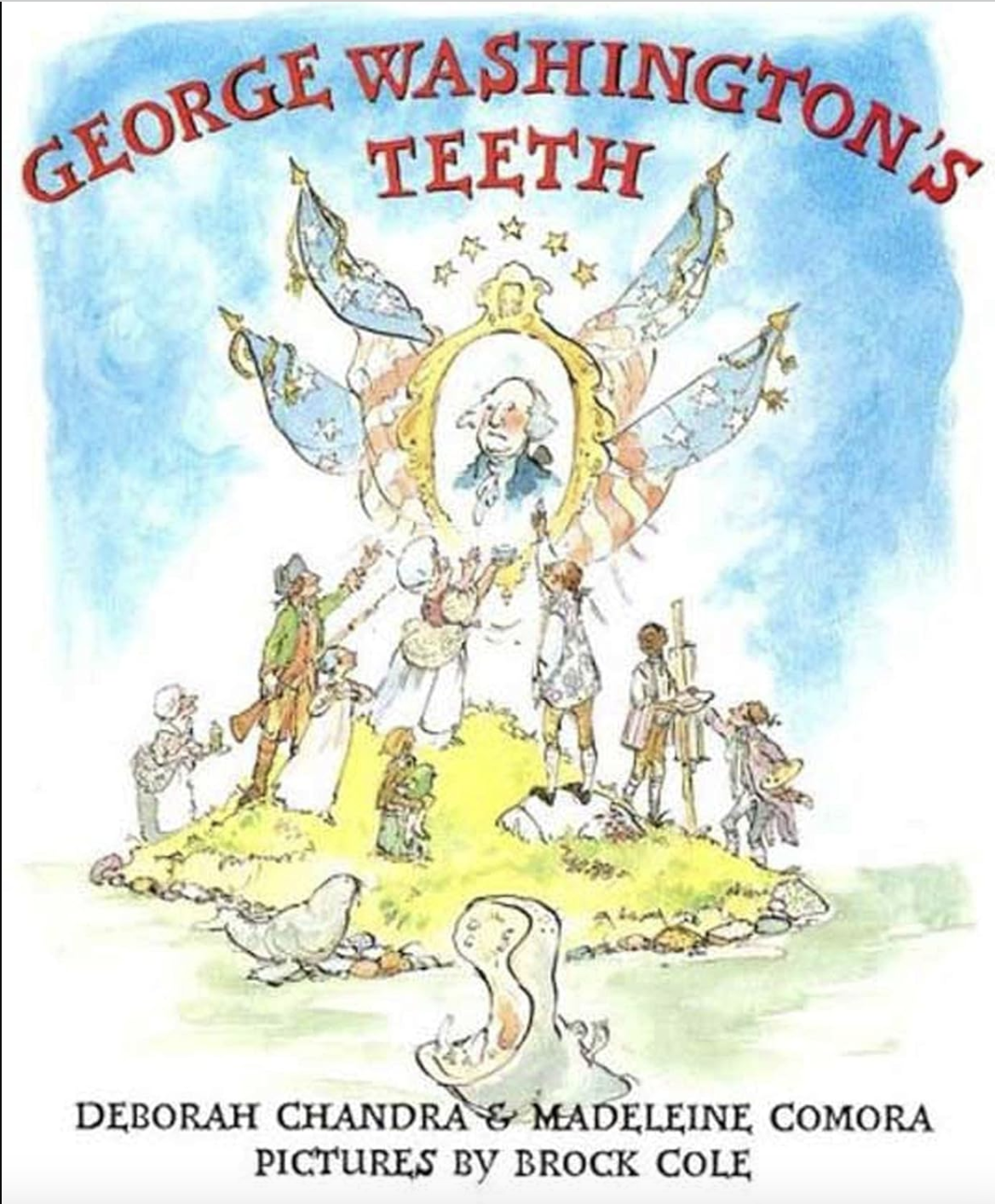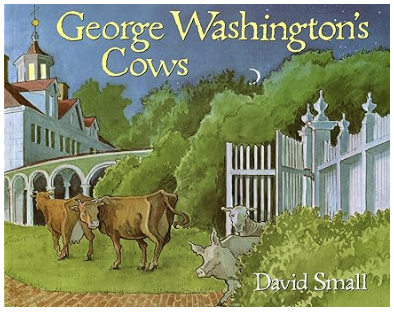This primary source is a handwritten set of general instructions from George Washington, dated September 1755, during his early days as a military leader in the French and Indian War. I chose this document for my first-grade class because it demonstrates that George Washington was a leader even before he became president. To support student inquiry, I will guide them through a "Then and Now" activity. We will examine a simplified version of the document and discuss Washington's rules for his soldiers, such as being respectful, maintaining fairness, and following directions. Afterward, students will brainstorm what rules a good leader might implement today in our classroom or community. Each student will create a mini poster titled "Rules of a Good Leader" to showcase what they learned. This activity aligns with our goal of helping students connect historical figures to leadership qualities that they can understand and practice in their own lives.
This album was created by a member of the TPS Teachers Network, a professional social media network for educators, funded by a grant from the Library of Congress. For more information, visit tpsteachersnetwork.org.
Ella Meuse - George Washington Day (Presidents’ Day)
Album Description
This album supports instruction related to Virginia Social Studies 1.4a, which asks students to describe the lives of people associated with major holidays, including Presidents' Day (also known as George Washington Day). This holiday honors the life and legacy of George Washington, the first president of the United States, who played a crucial role in the founding of the country. Through his exceptional leadership during the American Revolution, his service as president of the Constitutional Convention, and his two terms as president, Washington set important examples for future leaders. This album offers a collection of primary sources and instructional resources designed to help first graders understand the life of George Washington and the reasons we honor him on Presidents’ Day.
President's Day - George Washington.
Teaching Notes
To encourage students to actively engage with the portrait of George Washington, I would start by displaying a large, clear version of the portrait on a whiteboard and asking the students to quietly observe it for about one minute. After that, I would provide them with a set of guided observational questions to help them think more deeply about its historical significance. The guided questions would include:
1. What do you notice first when you look at this picture?
2. What is George Washington wearing? What might that tell us?
3. How is his body positioned? Does he look serious, happy, or proud?
4. Why do you think someone painted this portrait?
5. Do we still take pictures of important people today? How is that the same or different?
Once the students have answered these questions and discussed their thoughts with a partner, I would shift the conversation into a whole-class compare-and-contrast activity. I would show them a portrait of the current president and ask them what is similar and what is different about the two portraits. This comparison will help students understand how history is visually recorded while encouraging them to think critically about how people in power are represented over time.
Reference link: http://www.loc.gov/item/2019666520/
Reference note
Summary
- "The social media post text for this series of graphics read: 'Most Americans have never noticed this very tiny detail contained within this portrait of #GeorgeWashington'". Description from creator, Joseph Galbo.
Created / Published
- Bethesda, M.D. : U.S. Consumer Product Safety Commission, 2017-02-20.
Notes
- - Approved by Director of Communications, Scott Wolfson and Deputy Director of Communications, Patty Davis; CPSC Acting Chairman Ann Marie Buerkle
- - Transcription of text from image: "Have a working smoke alarm on every floor and in every bedroom".
Digital Id
Mount Vernon
Teaching Notes
I would begin by showing students a photograph of Mount Vernon, George Washington's home in Virginia. I would ask the students to brainstorm with a partner about what they think the photo depicts. After about two minutes, I would invite them to share their thoughts and reveal that this was where Washington lived when he wasn't leading the country.
Next, we would compare Mount Vernon to their own homes by creating a T-chart to list the similarities and differences. I would ask questions like, “Do you think this home is old or new?” and “What activities might he have engaged in there every day?”
Through this exercise, students would learn that George Washington was not only a president and a general, but also a farmer who lived a quiet life at home after serving his country. This approach helps students recognize Washington as a real person with a family and responsibilities outside of his government role.
Reference link: http://www.loc.gov/item/2009631344/
Reference note
Summary
- Stereograph shows Mount Vernon estate, Virginia.
Created / Published
- [New York : George Stacy, ca. 1865]
Genre
- Stereographs--1860-1870
- Albumen prints--1860-1870
- Tax stamps--1860-1870
Notes
- - Title from item.
- - Card number: "No. 218."
- - Publisher attribution based on provenance.
- - Forms part of the Larry Gottheim Collection of stereographs and other early photographs (Library of Congress)
- - Gottheim collection code: GCW 55A.
- - Handwritten number on verso: 198J.5.
Repository
- Library of Congress Prints and Photographs Division Washington, D.C. 20540 USA http://hdl.loc.gov/loc.pnp/pp.print
Digital Id
- stereo 1s01841 //hdl.loc.gov/loc.pnp/stereo.1s01841
- stereo 2s01841 //hdl.loc.gov/loc.pnp/stereo.2s01841
Washington crossing the Delaware
Teaching Notes
I would use the famous painting of George Washington Crossing the Delaware to illustrate a bold move he made during the Revolutionary War. I would explain how he led his troops across a freezing river on Christmas night to surprise the enemy and boost his soldiers' morale. We would examine the painting, taking note of the dark clouds, the icy water, and the serious expressions on the soldiers' faces, and discuss what all of this reveals about leadership and bravery. Then, I would have the students imagine themselves in the boat and either write about their experience or create a drawing to capture what that moment might have felt like. This lesson emphasizes George Washington's courage and determination as a leader who played a significant role in America's fight for independence.
Reference link: http://www.loc.gov/item/2020633689/
Reference note
Summary
- Print after painting by Emanuel Leutze.
Created / Published
- New York : Published by Goupil & Co., 1853.
Genre
- Conjectural works--1850-1860
- Paintings--Reproductions--1850-1860
- Steel engravings--1850-1860
Notes
- - Title transcribed from item.
- - "Entered according to Act of Congress, in the Year 1853, by M. Knoedler, in the Clerk's Office of the district Court of the United States for the southern district of New York."
- - Purchase; The Philadelphia Print Shop West; 2020; (DLC/PP-2020:082).
- - Vendor : The Philadelphia Print Shop West.
Repository
- Library of Congress Prints and Photographs Division Washington, D.C. 20540 USA http://hdl.loc.gov/loc.pnp/pp.print
Digital Id
- ppmsca 71276 https://hdl.loc.gov/loc.pnp/ppmsca.71276
Washington before Yorktown
Teaching Notes
I would start by telling the students that before George Washington became our nation's first president, he served as a general who played a crucial role in leading the American colonies to victory in the Revolutionary War. I would show them a painting and encourage them to closely examine its details, pointing out how Washington sits proudly on a white horse, the other soldiers looking towards him, and how the scene captures a sense of movement and action.
I would ask questions like, “What do you think he’s doing?” and “How does this image illustrate his bravery?” We would discuss how artists created such paintings to commemorate and honor significant leaders, portraying Washington as strong and heroic.
Afterward, the students would create their own interpretation of the scene and complete a sentence such as “George Washington was brave because…” or “If I were riding alongside George Washington, I would feel…” This lesson helps students understand that Washington was not just a president, but also a military leader who displayed great courage in the fight for America’s independence.
Reference note
Creator(s): Peale, Rembrandt, 1778-1860, artist
Date Created/Published: [2001]
Summary: Reproduction shows George Washington, full-length portrait, in full dress uniform on horseback preparing his troops for the final battle of the Revolutionary War in Yorktown, Virginia. The figure to Washington's immediate right is the Marquis de Lafayette, and the three officers barely visible behind him are Compte de Rochambeau, Henry Knox and Benjamin Lincoln. Alexander Hamilton is the rider on the right.
Call Number: PRES FILE - Washington, George--In uniform--Paintings--Full [item] [P&P]
Repository: Library of Congress Prints and Photographs Division Washington, D.C. 20540 USA http://hdl.loc.gov/loc.pnp/pp.print
Notes: Note on front: Rembrandt Peale, Washington Before Yorktown, 1824-1825, Oil on canvas, 139 x 121 inches. The Corcoran Gallery of Art, Gift of the Mount Vernon Ladies Association. Title from item.
Subjects: Washington, George,--1732-1799. Generals--Virginia--Yorktown--2000-2010.
George Washington to Continental Congress, April 18, 1776
Teaching Notes
I would start by introducing the source and saying, "A long time ago, people didn’t have phones or computers. If George Washington wanted to communicate with other leaders, he had to write a letter!" Next, I would project or print a copy of the letter's image. I would point out his name, the date, and emphasize that it was handwritten. I would then explain, "This letter was written during the war when Washington needed assistance and was trying to collaborate with other leaders." Then, I would read an adapted version aloud for the class so that they would get an idea of what he is saying in the letter. I would then ask students to talk about why they would write letters in their own lives.
Reference note
Created / Published
- March 14, 1776 - July 14, 1776
Genre
- Manuscripts
Repository
- Manuscript Division
Image 3 of George Washington Papers, Series 8, Miscellaneous Papers ca. 1775-99, Subseries 8B, Military Commissions, Honorary Degrees, Memberships, and Certificates of Appreciation, 1775-1798: Military Commissions, Honorary Degrees, Memberships, and Certificates, 1775-1798
Teaching Notes
This document outlines the appointment of George Washington as Commander-in-Chief of the Continental Army by the Continental Congress. It would be a valuable resource in a first-grade classroom for teaching about the contributions of changemakers in Virginia's history. In my classroom, I would start with a "See, Think, Wonder" activity, which is a visual thinking strategy. I would project the image of the document on the board and ask questions during the "See" phase, such as: "What do you notice?" and "What do you see that seems important?" This allows students to point out details like the signature, handwriting, names, and dates. For the "Think" phase, I would ask questions like: "What do you think this paper is for?" and "Why might someone write a document like this?" Finally, in the "Wonder" phase, I would prompt the students with: "What do you wonder about George Washington after seeing this?" This "See, Think, Wonder" activity encourages observation skills and ignites historical curiosity in young children.
Reference link: http://www.loc.gov/resource/mgw8b.124_0164_0189/?sp=3
Reference note
Created / Published
- 1775/1798
Genre
- Manuscripts
Repository
- Manuscript Division
George Washington, September 17, 1796, Farewell Address
Teaching Notes
This document presents the opening of George Washington's Farewell Address to the American People, where he declares his intention not to pursue a third term as president. To engage students in the inquiry process, I would utilize a combination of document analysis and shared reading. First, I would have my students examine the handwritten letter closely and take on the role of "document detectives" to notice details such as the ornate script, formal language, and the phrase "To the People of the United States." Then, I would guide my students through a simplified version of the text. This would aid them in understanding that Washington will not seek another presidential term and is expressing gratitude to the country for their trust in him. Through class discussion, my students would explore why a leader might choose to step down and how that demonstrates responsibility and concern for the nation's well-being. This approach fosters curiosity, connects students to significant historical choices, and promotes early civic thinking in an age-appropriate manner.
Reference link: http://www.loc.gov/resource/mgw2.024/?sp=229&st=text
Reference note
Created / Published
- April 3, 1793 - March 3, 1797
Genre
- Manuscripts
Repository
- Manuscript Division
WASHINGTON'S INAUGURAL ADDRESS OF 1789 : A Transcription
Teaching Notes
This document is the transcript of George Washington’s First Inaugural Address, delivered in 1789 when he became the first president of the United States. To engage young learners in the inquiry process, I would implement a close listening strategy alongside a text-to-self connection. After reading a simplified excerpt aloud, we would discuss who Washington was addressing and explore why he might have felt grateful and optimistic about taking on such a significant role. By helping students connect Washington’s words to their own views on leadership, they can better understand the principles he embodied as president. I would then guide them through a creative reflection activity where they complete the sentence, “If I were president, I would help my country by…” This approach promotes civic thinking and empathy while enhancing their comprehension of Washington’s influence as a changemaker.
George Washington Papers, Series 4, General Correspondence: American Intelligence Report, June 12, 1777, Report on British Military Operations in New York
Teaching Notes
This primary source is a handwritten diary entry by George Washington, dated June 12, 1777, and created during the Revolutionary War. It captures a specific moment when Washington was in command of the Continental Army, detailing his daily activities, the weather conditions, and his military insights. To engage students in inquiry, I would use a technique called “Zoom In, Zoom Out.” We would begin by analyzing the visual aspects of the page, focusing on his cursive writing, the ink used, and the date, which would prompt students to share their observations. Then, we would broaden our perspective to explore the events of 1777 and consider why Washington may have chosen to record this information. To foster a personal connection, students would create their own illustrated journal page to document something significant or exciting from their day. This exercise would help them understand how diary entries capture both personal and historical moments.
Reference link: http://www.loc.gov/item/mgw447447/
Reference note
Created / Published
- June 12, 1777
Genre
- Manuscripts
Notes
- - Report on British Military Operations in New York
Repository
- Manuscript Division
George Washington, September 3, 1755, Recruiting Instrs
Teaching Notes
Reference link: http://www.loc.gov/resource/mgw2.001/?sp=176&st=image
Reference note
Created / Published
- August 11, 1754 - December 25, 1755
Genre
- Manuscripts
Repository
- Manuscript Division
Screenshot 2025-05-07 at 10.58.25 AM.png
